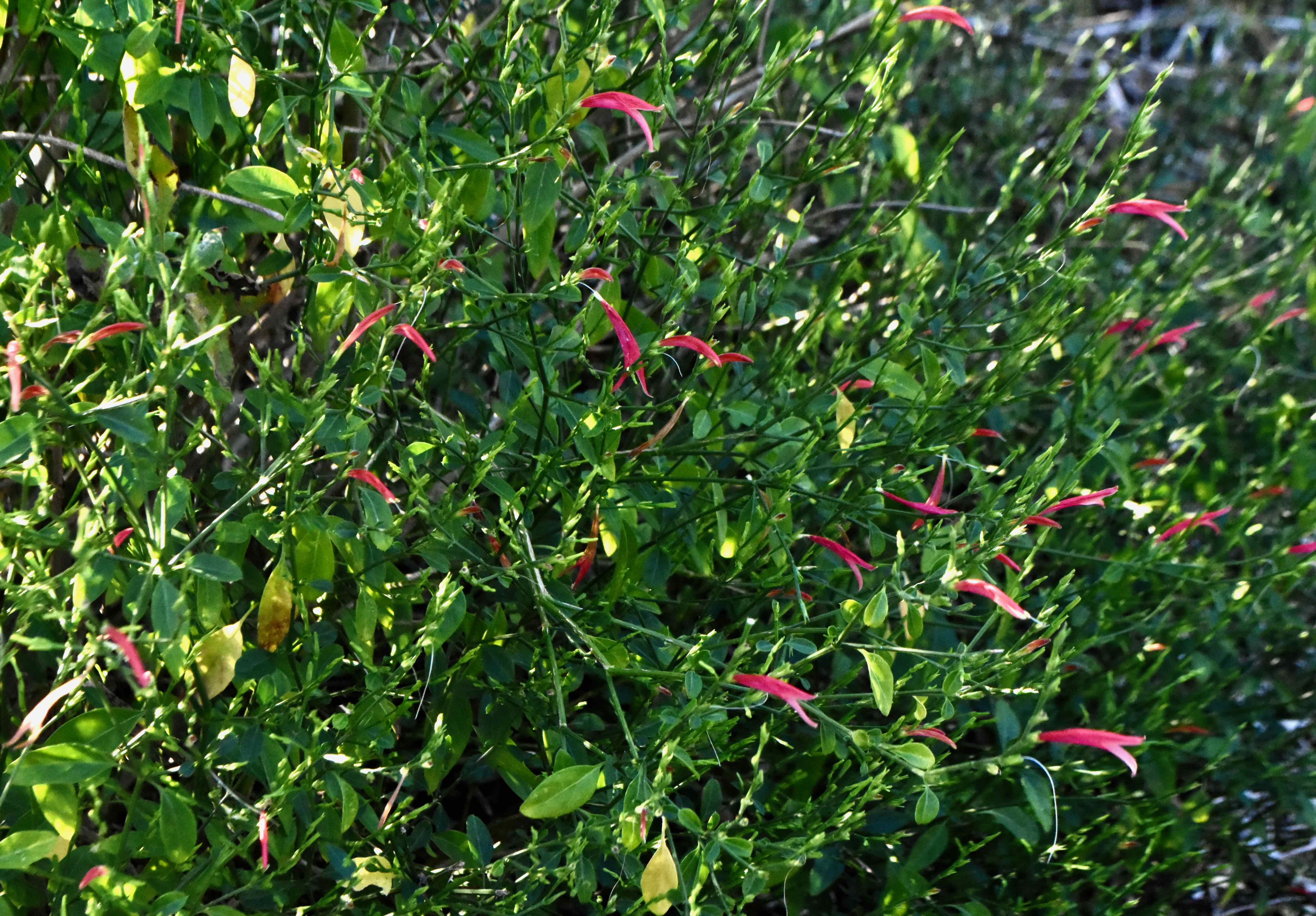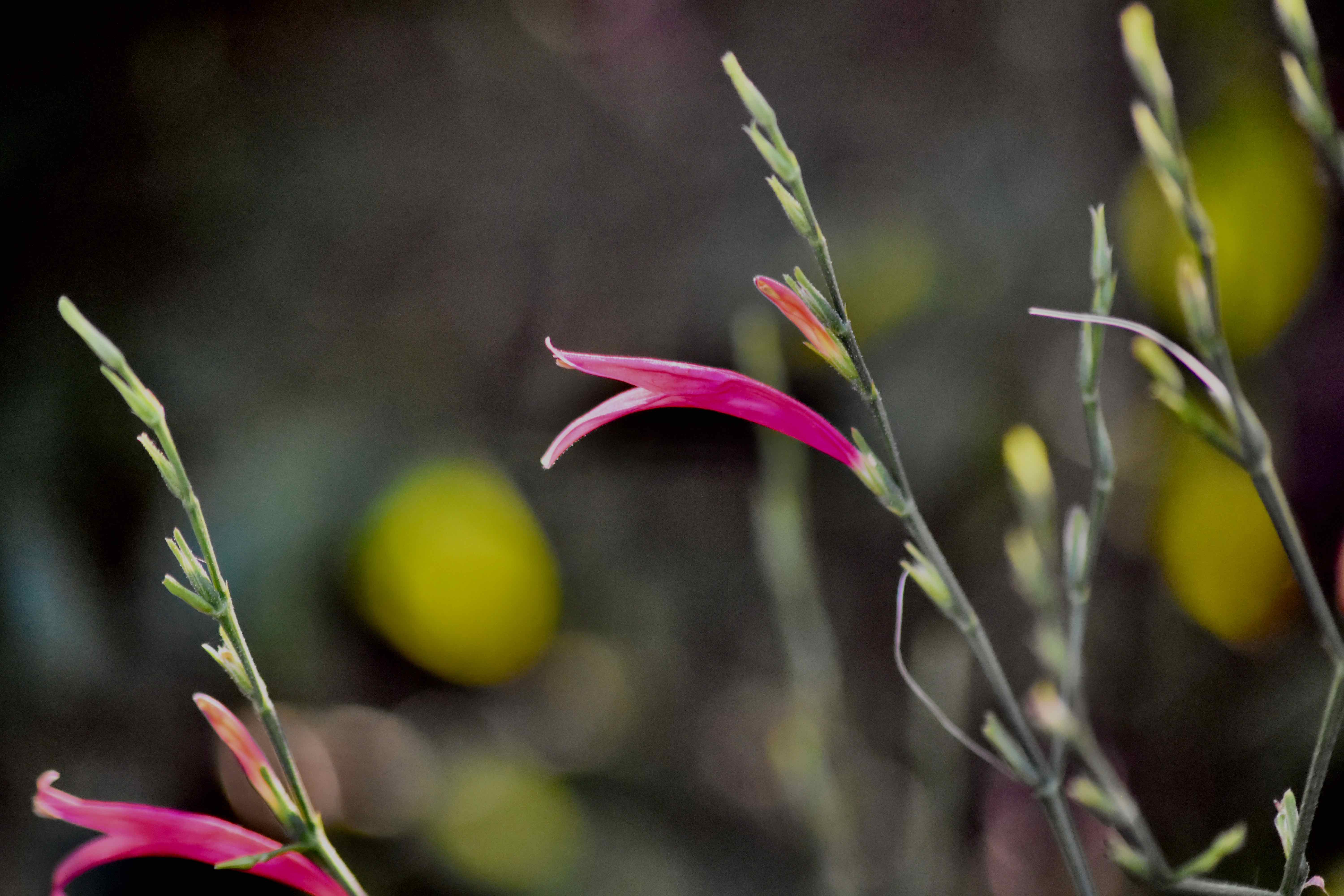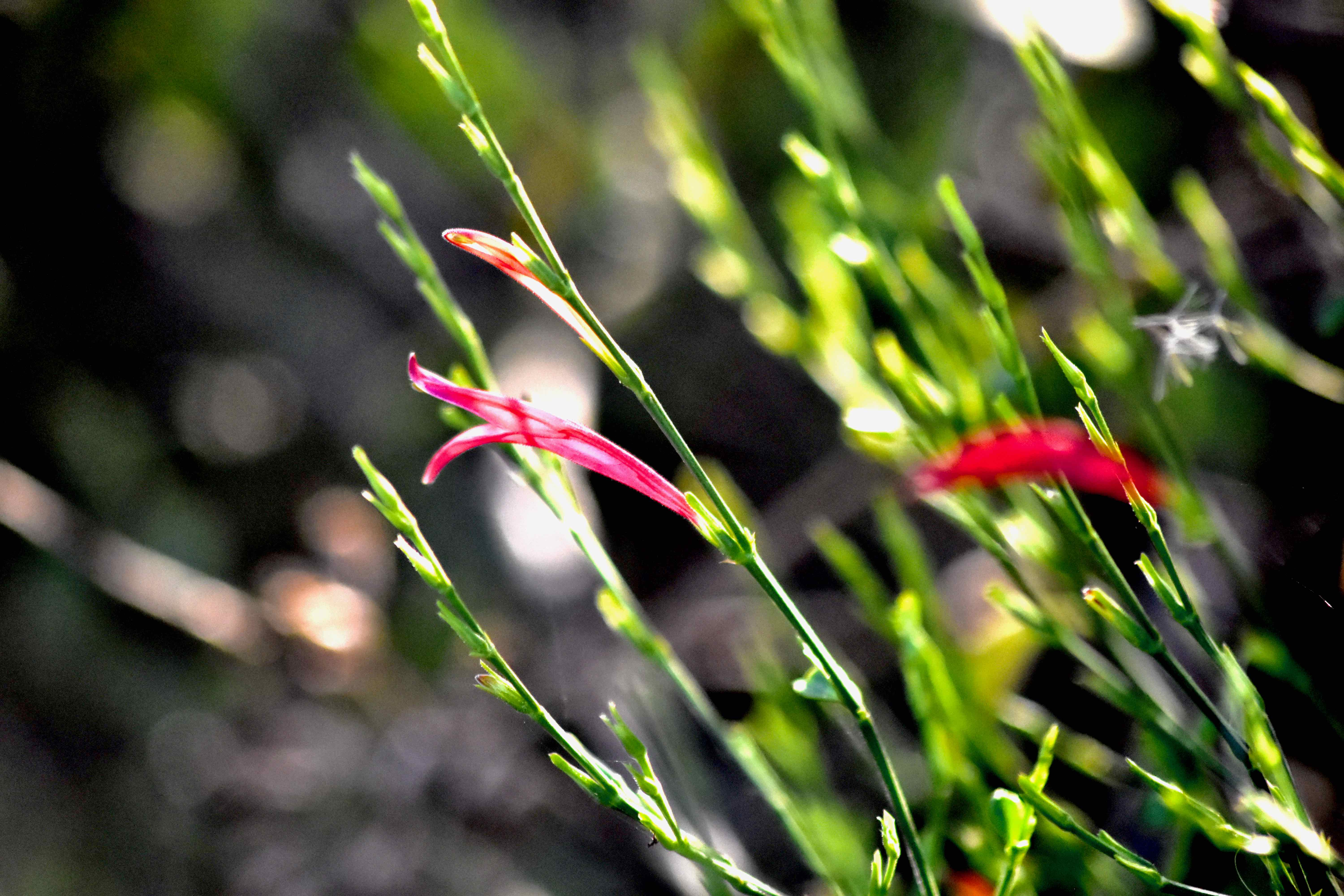
Crimson dicliptera, photographed at Pondhawk Natural Area, Boca Raton, Palm Beach County, in February 2018.
The word unique means one of a kind. This guy, crimson dicliptera, with its bright, deep, thin tubular flowers, fits the word. At least within the flora of South Florida, it is unique. You won't confuse it for anything else.
Crimson dicliptera is a Florida native, an annual, found in parts of Central and South Florida, including Broward, Miami-Dade, Monroe, Collier, Lee and Martin counties. Somehow it missed Palm Beach County but it's found in Calhoun County in the Panhandle. Oddly enough, the two places we've seen crimson dicliptera were in Palm Beach County, including the plants on this page. It's also native to Texas, the Caribbean, Mexico, Central America and parts of South America.
Favorite habitats include the edges of coastal hammocks and mangrove forests, salt marshes and thickets. Crimson dicliptera is also used in landscaping, particularly in butterfly gardens. More on that in a bit.
It's a fairly tall plant, reaching three or four feet in height, usually taller than it is broad, but sometimes forming large colonies. It is an annual. The leaves are oval, about 1.5 to two inches long and arranged alternately along the stem. It is moderately salt tolerant.
But what visually stands out about crimson dicliptera is those unusual tubular flowers. They're usually deep red but can range toward orange. The flowers are thin and about an inch long. Blooming season runs between February and November, with flowers giving way to a seed capsule that has two winglike parts that happen to be the inspiration for both the scientific name and the common name. Dicliptera is a mash-up of the Greek diklis or diclis, meaning double-folding, and pteron, the Greek word for wing. Double-folding wing. Dicliptera. Sexangularis refers to the angled, jointed stems.
The plant is something of a wildlife magnet. The Cuban crescent, also known as the pale-banded crescent, and large orange sulphur butterflies use crimson dicliptera as a host plant for their larvae. Ruby-throated Hummingbirds sip nectar from those tubular flowers, as do numerous species of butterflies; painted buntings will eat the seed pods.
Florida's native tribes apparently didn't have much use for the plant, but others within its native range did. According to Daniel Austin's Florida Ethnobotany, in Mexico's Yucatan Peninsula, crimson dicliptera was used as a remedy for asthma; the Huastel of San Luis Potosi used it to stop hemmorrages and quiet restless babies; In Vera Cruz, it was used to treat eye problems, and the branches have been used to make brooms.
As we said, the looks of crimson dicliptera are unique within the bounds of wild South Florida. However, it does have a cousin with similar looks elsewhere in the Sunshine State. That would be branched foldwing, Dicliptera brachiata. Even here, the two don't really look alike.
Other common names for crimson dicliptera include false mint, sixangle foldwing and hummingbird plant (as are other members of the Dicliptera genus — there are about 150 altogether). It is a member of Ancanthaceae, a family of mostly tropical plants that includes wild petunias.
Pondhawk Natural Area


